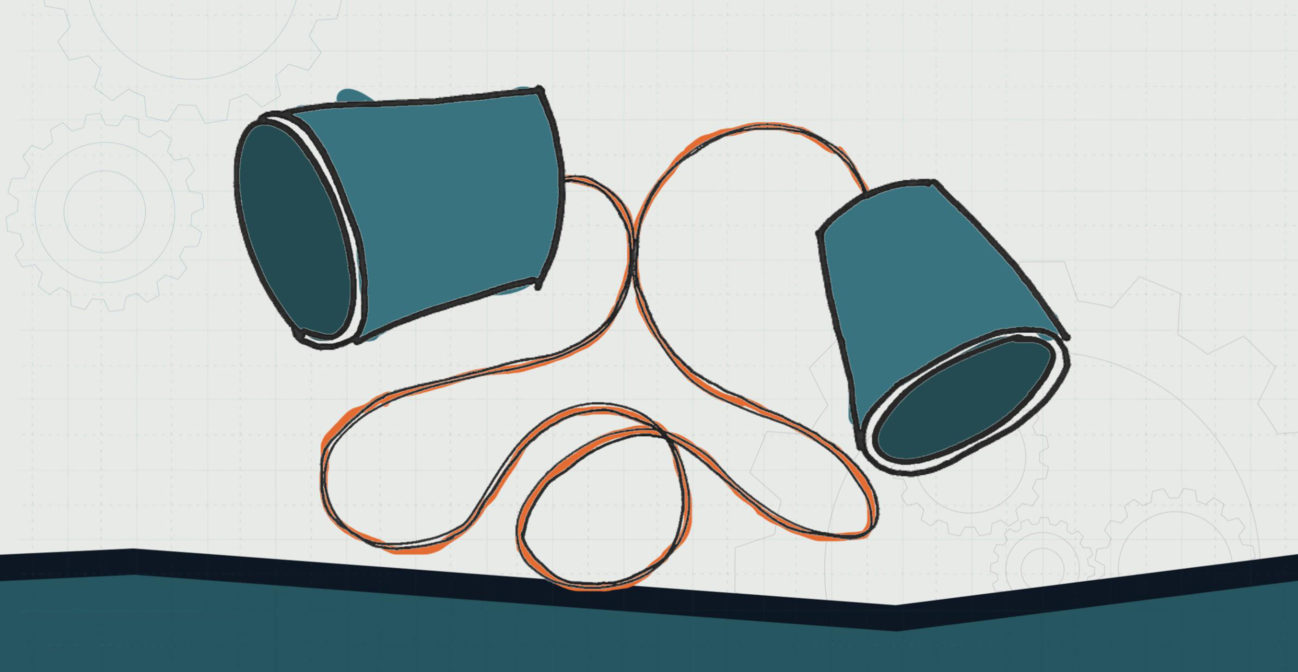Join us for conversations that inspire, recognize, and encourage innovation and best practices in the education profession.
Available on Apple Podcasts, Spotify, Google Podcasts, and more.

ELEMENTARY SCHOOL – LEVEL 1
“Hello?” Engineer working telephones using the science of sound waves.
MATERIALS NEEDED:
❏ Two paper cups
❏ String (try different lengths!)
❏ Something pointy to make a hole (toothpick, pen, etc.)
❏ Tape
DIRECTIONS:
OBJECTIVE: Students will be able to design and construct telephone cups to investigate how sound is transferred.
ESSENTIAL QUESTION(S):
1. Teacher engages students in the construction of telephone cups
a. Teacher may opt to create cups beforehand but doesn’t direct the activity
2. Students design and carry out an investigation to determine how the telephones are able to transmit sound
a. Predict
i. How might these cups be used as a telephone?
ii. What will happen to the sound if the string is not tight?
iii. Can you hear a sound if the string is cut?
b. Observe
i. Students carry out experiments to test out their predictions
ii. Record their results
c. Explain
i. Students construct explanations from observations
1. How might these cups be used a telephone?
2. What will happen to the sound if the string is not tight?
3. Can you hear a sound if the string is cut?
1. Hold a whole-group discussion around the results of their experiment
a. Is the string important in hearing a sound? Explain
b. Is the string able to carry sound to the other person?
2. Teacher discusses the concept of a medium or reads literature on sound and mediums
a. Solids, liquids, and gasses are mediums
b. Teacher may discuss molecular interaction if age-appropriate
3. Evaluate
a. Students’ reasoning
b. Understanding a medium—can they provide examples?
1. Teacher may have students revise the cups with other materials
a. Determine if some materials are better than others
b. Do some objects vibrate better than others?
2. Students are prompted to talk in pairs or small groups on what they have learned from the cup activity
a. Teacher monitors their talks
b. May be done as a whole group if desired
3. Teacher asks students questions
a. How are you able to hear your partner speaking?
b. Where is the string?
c. What is the medium carrying the sound between your group?
4. Evaluate
a. Experimentation with various materials
b. Reasoning
c. Drawing conclusions from evidence
NGSS CONNECTION:
1-PS4-1. Plan and conduct investigations to provide evidence that vibrating materials can make sound and that sound can make materials vibrate.
1-PS4-4. Use tools and materials to design and build a device that uses light or sound to solve the problem of communicating over a distance.*
4-PS3-2. Make observations to provide evidence that energy can be transferred from place to place by sound, light, heat, and electric currents.
COMMON CORE CONNECTION:
ELA/Literacy
W.1.7 Participate in shared research and writing projects (e.g. explore a number of how-to books on the topic and use them to write a sequence of instructions).
W.1.8 With guidance and support from adults, recall information from experiences or gather information from provided sources to answer a question.
SL.1.1 Participate in collaborative conversations with diverse partners about grade level topics and texts with peers and adults in small and larger groups.
W.4.7 Conduct short research projects that build knowledge through investigation of different aspects of a topic.
W.4.8 Recall relevant information from experiences or gather relevant information from print and digital sources; take notes and categorize information, and provide a list of sources.
Mathematics
MP.5 Use appropriate tools strategically.
1.MD.A.1 Order three objects by length; compare the lengths of two objects indirectly by using a third object.
1.MD.A.2 Express the length of an object as a whole number of length units, by layering multiple copies of a shorter object (the length unit) end to end; understand that the length measurement of an object is the number of same-size length units that span it with no gaps or overlaps. Limit to contexts where the object being measured is spanned by a whole number of length units with no gaps or overlaps.
DOK:
Level 2: Concept
Level 3: Strategic Thinking
Level 4: Extended Thinking